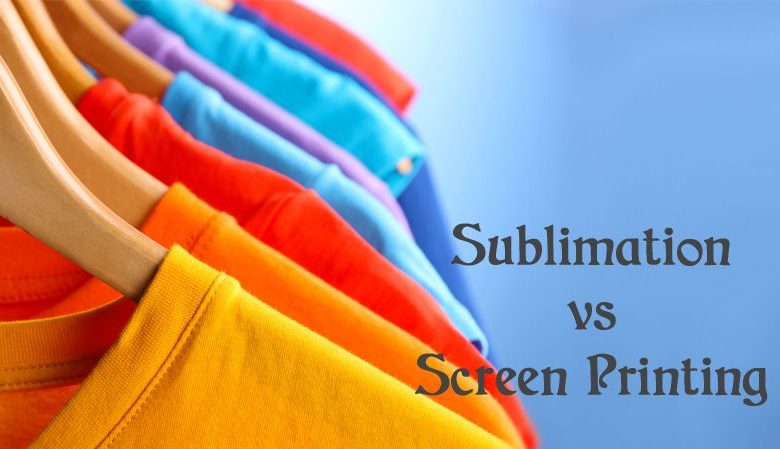The Benefits of Using Sublimation as Compared to Other Printing Techniques

Are you looking for printed products that feature high-resolution quality, unique colors, and last longer? For the best-designed apparel, home decor, and marketing displays, Just Vision It uses dye sublimation printing to achieve superior quality and vibrant graphics.
Dye sublimation is a printing process commonly used in the exhibition and advertising world. In simple terms, it’s a chemical process where heat is used in high intensity with solidified inks that are turned into gas, and then transferred on to the printing material without going through the liquid phase.
The Advantages of Using Dye Sublimation Method
- Continuous tone – With sublimation printing, every spec of ink can be any color you want. Hence, sublimated materials have a high-resolution quality and have an awesome color tone even when seen under a microscope.
- You don’t need to wait for it to dry – Printing on fabric creates a dry print immediately after the process. You can fold or wear your t-shirt, or dress immediately after printing without fear of smearing the ink or ruining the design.
- Fewer moving machine parts – Heat presses are easy to use and are secure machines. The thermal print head is stable, and you don’t need to move it back and forth when printing. It also means that sublimation printers are low maintenance and don’t break down quickly.
- No mess – Because the solidified inks are turned into gas and onto the printing materials, there are no messes and no cleanups because there’s no liquid ink that can spill.
- No fading – With sublimation printing, it permeates the fibers of the materials used and becomes part of the material. It will also not degrade or fade the material, plus you’re assured of the colors not running when exposed to water.
- Seam to seam printing – Sublimation printing can work on the most intricate shapes, allowing you to print on the entire fabric of any apparel.
- Uses minimal energy and no water – When using dye sublimation printing, it requires very little energy compared to other printing techniques. Also, there’s no need for water in the printing process.
- It can be used on small batches – It’s great for small batch orders or one-off orders. This makes it easy to use sublimation printing to customize apparel mugs or key rings for special occasions.
The Disadvantages of Sublimation Printing
- Can’t be used on dark colors – Sublimation printing is more similar to high precision dyeing than imprinting. It works best with light-colored or white materials. It also doesn’t work well with natural fibers like paper or cotton unless the materials have been coated with a polymer-based substance beforehand.
- Must use special printers and inks – Since sublimation printing inks are formulated to turn into vapor, it’s more prone to clogging printers. For this reason, printing an image for transfer on the heated paper through sublimation requires a specialized printer that can handle the ink cartridges used for this process.
- It can be a slow process – Compared to screen printing and inkjets, which can be used in rapid succession, sublimation printing requires that each product is printed individually. It also requires an additional step of printing the transfer paper, which may need extra labor.
- Cheap materials may exude toxic fumes – If you use low-quality materials, they may burn during the heating process and expose employees to toxic fumes. Make sure the materials used are of the best quality.
- Non-recyclable waste – Sublimation dye printing produces a lot of waste that can’t be recycled. Compared to other printing processes, sublimation printing requires an extra step, and that’s why it creates a lot of waste materials. The print is first printed onto transfer paper, making the ink contaminated, and therefore, can’t be used again. Also, the fact that it permeates deeply into the material means that the material can’t be recycled.
Dye Sublimation vs. Heat Transfer
Dye-sublimation printing and heat transfer are both heat transfer methods that use the same steps in print, but the end product is very different.
They both involve printing images on transfer paper, and then using pressure and heat. However, the difference is that with sublimation printing, the image permeates deep into the material’s fibers. In contrast, with heat transfer, the image is transferred to the top and becomes an added layer on the top of the print product.
Compared to heat transfer, sublimation printing is a better option because it produces beautiful, clear, and crisp images that last longer.
Heat transfer can be used on a variety of materials and is cheaper than sublimation printing. However, compared to sublimation printing, the colors won’t come out as vibrant, and the quality tends to decrease with time as the colors will fade. That’s why most businesses prefer using sublimation printing over heat processing.
Dye Sublimation vs. Traditional Screen Printing
Screen printing involves printing the graphics on to the materials by the use of a screen. It’s usually used on apparel and t-shirts and can be produced in bulk. This makes it less expensive. However, a new stencil is needed for every new design and each color used. In screen printing, only simple designs can be created, unlike sublimation printing where intricate and unique designs can be created.
While sublimation is done on polyester or poly-coated products, screen printing can be used on any flat surface. While this offers more options for fabrics like cotton, screen printing can’t be done on textured surfaces or mugs. It can only be processed on flat surfaces. Otherwise, the resulting image may come out distorted. This is why screen printing is preferred on the use of garments and restricted to one color use only. On the other hand, sublimation printing can be used on detailed designs and a variety of colors.
Why Sublimation Is Better
Sublimation printing creates room for creativity and intricate designs that utilizes the full-color printing process. The types of materials that can be used on sublimation printing are almost the same as those used on screen printing. Sublimation printing remains the better option.




